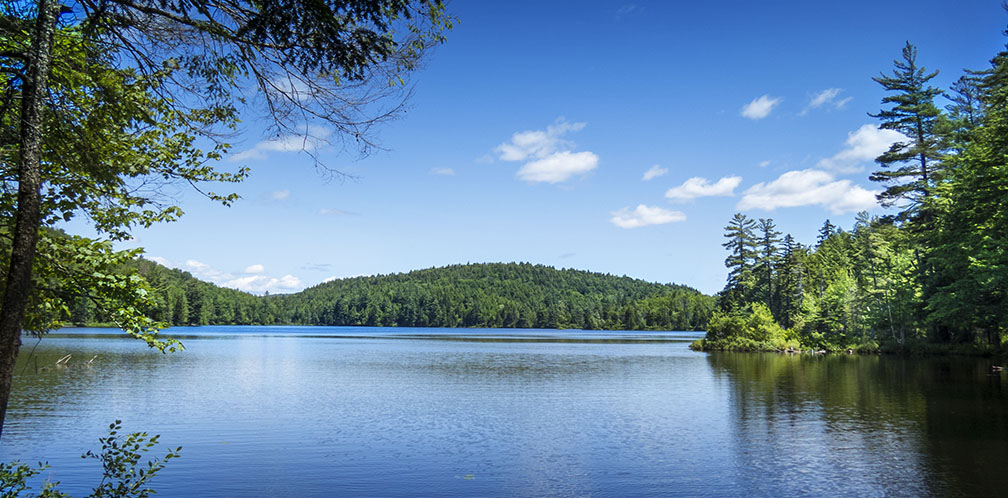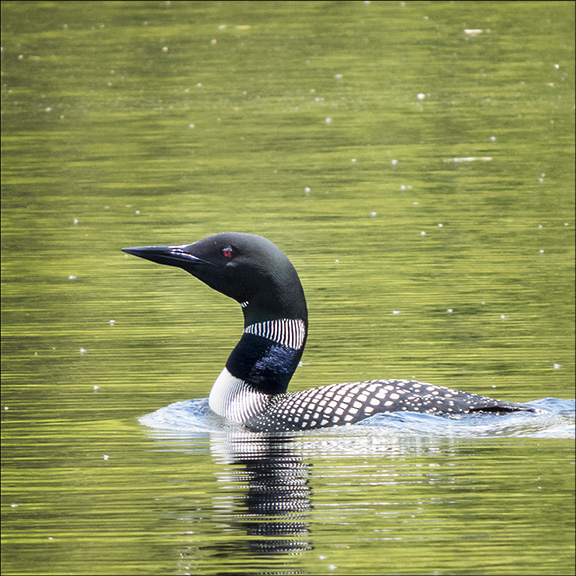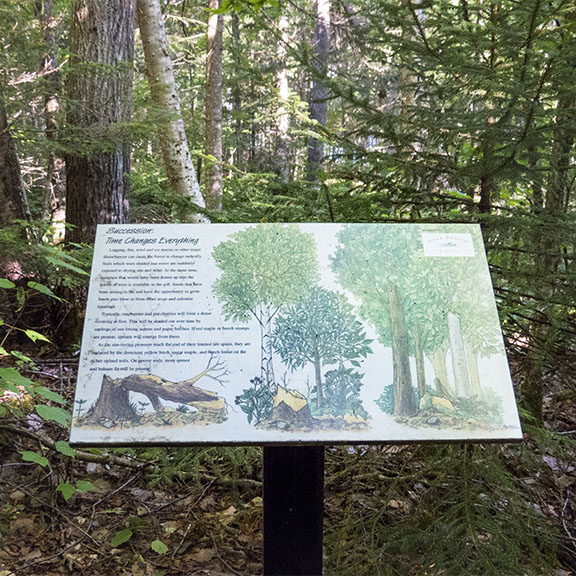Adirondack Nature Trails

Adirondack nature trails offer opportunities to enjoy the natural beauty of the mountains and learn about the habitats, plants, and wildlife in the six-million acre Adirondack Park. The trails fall roughly into several broad categories:

Walking Trails:
These are generally well-surfaced trails that do not involve a major change in elevation and generally do not require hiking boots. Some may be used as cross-country ski or snow shoe trails in the winter months. Some walking trails make congenial nature trails.Backcountry Hiking Trails:
These trails are rough and often narrow paths, often involving a major change in elevation to reach the summit of one of the Adirondacks’ hundreds of mountains. Not all backcountry hiking trails involve a mountain climb. Some access a particular landscape feature, like the Black Pond Trail at the Paul Smith's College VIC, which loops around Black Pond. Some backcountry hiking trails provide opportunities to view wildlife, plants, and geological structures that may not be readily available on walking trails. For example, some of the backcountry trails at the Paul Smith's College VIC provide access to interesting geological features, such as kettle ponds, eskers, and glacial erratics. Hiking boots are recommended. Some backcountry trails are used as cross-country ski or snowshoe trails in the winter months.Mountain Biking/Cross Country Ski Trails:
These are trails created for and by mountain bikers and/or cross-country skiers. Some are also used as cross country ski trails. An example is the Jackrabbit Trail from Keene through Lake Placid and Saranac Lake to Paul Smiths, with many side trails and loops. Mountain biking trails can be rich in plant and animal life, but they may not be congenial for nature walking, especially when heavily used by cyclists, since the botanist or birder must be constantly vigilant for oncoming bikes.This website focuses on a subset of walking trails: those trails that are most congenial for people whose goal is the study and enjoyment of Adirondack habitats and the plants, wildlife, and fungi that flourish in them.
What makes a trail a good nature trail?

Varied Habitats:
Trails that weave through woodland and marshland, offering access to ponds, brooks, and bogs, provide a window to the varied habitats in the Adirondack Park. This means that trail walkers – whether they bird, botanize, wildlife watch, or photograph – have more opportunities to learn about Adirondack ecosystems. The Bloomingdale Bog Trail, for example, attracts birders looking for boreal birds, such as Canada Jays, Black-backed Woodpeckers, and Boreal Chickadees. The John Brown Farm Trails provide access to a variety of successional habitats that are home to birds and plants not seen in more mature forests. The north side of the Logger's Loop Trail at the Paul Smith's College VIC leads through the Forest Ecosystem Research and Demonstration Area (FERDA), showcasing the impacts of different logging practices on natural communities.Scenic Value:
The most effective nature trails offer attractive vistas or restful views of Adirondack forest communities, mountains, lakes, ponds, or streams. Examples include the stunning views of the High Peaks seen from the network of trails at Heaven Hill and the views of Barnum Bog from the Boreal Life Trail at the Paul Smith's College VIC.Easy Walking:
The best trails for observing wildlife, plants, and fungi are those that do not require constant attention to footwork. For that reason, the most congenial trails are those that are wide (especially important when used for guided nature walks) and well-surfaced. Wide trails are particularly important for birders, who need to have space to move around to view the birds. Wide trails also create edges, which tend to be rich in birds and plant life. For that reason, parking lots at trailheads, such as the trailhead at Henry's Woods near Lake Placid, tend to be great places to bird and to find sun-loving plants that cannot survive the deep shade of the woods.Single Use:
The most congenial trails for studying nature are those limited to pedestrian traffic. Bird and wildlife watchers, photographers, and those interested in examining plant life do best on trails where they do not have to compete with mountain bikers, horseback riders, unleashed dogs, or any kind of motorized traffic. Multi-use trails, by their very nature, do not always make the most effective nature trails.Wilderness Feel:
The Adirondacks are best experienced in an environment where the sights and sounds of human habitation are minimized. Road noise, construction sounds, and aircraft engines drown out the natural sounds of birds, animals, wind, and moving water. Trailside litter is a visual distraction. The best trails for nature study minimize such distractions. To some degree, the wilderness feel of a trail is undermined by man-made structures (such as boardwalks, overlooks, and trail signs) that promote study of certain habitats. Benches (although man-made structures that somewhat undermine the wilderness feel of a trail) are a useful addition to nature trails, because they encourage walkers to stop, observe, meditate, and appreciate the natural environment. Maximizing the wilderness feel of a trail while incorporating man-made structures that enhance its educational value (such as signs, benches, and overlooks) is a delicate balancing act.Interpretive Nature Trails

Interpretive nature trails are a special subset of nature trails. An interpretive trail features a series of sign posts. These can take the form of trail-side signs or numbered posts keyed to a hard-copy or online trail guide.
- Some signs identify key natural features or plants, sometimes with a brief description, such as the interpretive signs on the ADK Tree Trail at Heart Lake.
- Other signs are intended to highlight the habitat by the side of the trail or alert the trail user to the plants, animals, and insects to look for on a particular section of the trail.
Ideally, trail-side signs should be both informative and unobtrusive – highlighting natural features (and man-made features when appropriate to clarify the nature of the habitat), educating, and provoking quiet observation and contemplation – without marring the natural feel of the landscape. Examples can be found on the Peninsula Nature Trails in lake Placid.
Some of the interpretive nature trails covered on this site incorporate man-made elements allowing visitors close study of wetland habitats that are usually inaccessible to walkers. The most effective of these trails position such elements in a way to make sure that scenic views are not marred by man-made structures. For instance, at the Paul Smith's College VIC, the viewing platforms on the Barnum Brook Trail are positioned in a way that avoids marring the view of Saint Regis Mountain across Heron Marsh.
The trails highlighted and described on this site are evaluated in terms of the characteristics summarized above. More trails will be added in future site updates.
